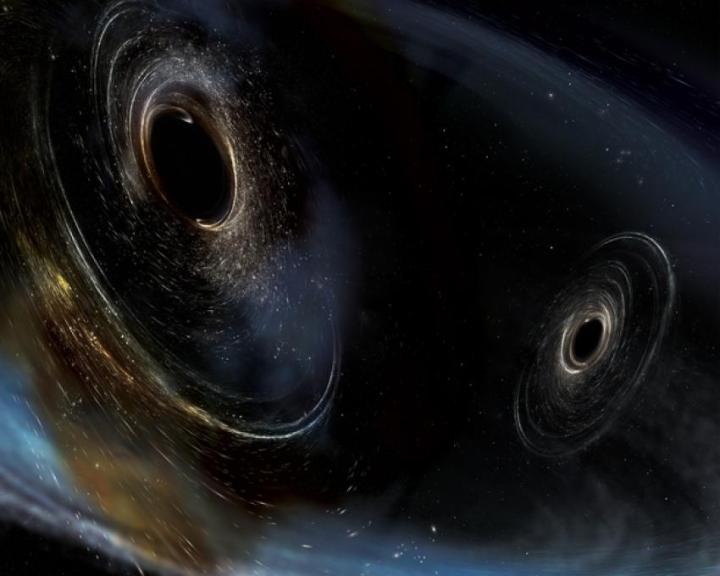When two sufficiently massive objects collide — such as when two black holes merge — the forces can actually bend space-time, creating ripples called gravitational waves. These gravitational waves can be detected even from millions of light-years away, making them a way to learn about distant, dramatic events in far-off parts of the universe. And now, a team of astronomers has come up with a method for using gravitational waves to study the mysterious phenomenon of dark matter.
The idea of the research was to create different computer models of what gravitational waves from black hole mergers would look like in universes with different types of dark matter. By comparing the models to what is seen in the real world, we can learn more about what type of dark matter is most likely.

Scientists know that dark matter doesn’t interact with light, but some people think that it could interact with a type of particle called a neutrino. That means that neutrino collisions could prevent dark matter from forming into the structures which are the basis for galaxies, so these particles could stop galaxies from forming. If we could find these “missing” galaxies, that would support the idea that dark matter can be affected by neutrinos.
It’s hard to see a galaxy that didn’t form, though. That’s why the researchers suggest using gravitational waves created in black hole mergers as a measure instead. With fewer galaxies there are fewer mergers, and therefore fewer gravitational waves.
Simulations show that this could be an effective method for learning about dark matter. Current gravitational wave detectors aren’t powerful enough to detect these small effects, but the next generation of instruments could be used for this purpose.
“Dark matter remains one of the enduring mysteries in our understanding of the universe,” said one of the researchers, Sownak Bose of Durham University, in a statement. “This means it is especially important to continue identifying new ways to explore models of dark matter, combining both existing and new probes to test model predictions to the fullest. Gravitational wave astronomy offers a pathway to better understand not just dark matter, but the formation and evolution of galaxies more generally.”
The research was presented at the 2023 National Astronomy Meeting on 5 July.



